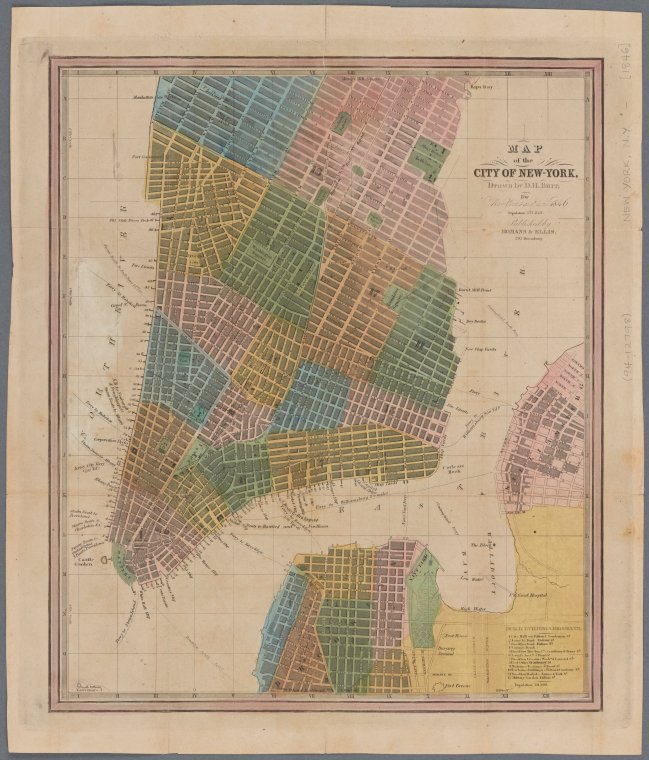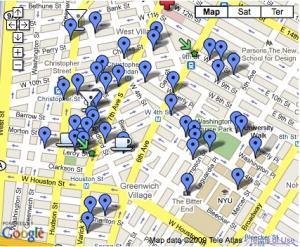Village Haunts
After 165 years things are bound to change, even in the Village. Maps are a great way to see that change, and fortunately The New York Public Library has one of the world's great map collections. Here's a map of lower Manhattan when Edgar Allen Poe roamed the Village:
 For a nice stroll around the Village, visit the locations of each of Poe's homes. I suggest that you start at Waverly and Sixth, go down to W. 3rd Street, over to Carmine and end up at James J. Walker Park where there is just one stone monument left from when this area was St. John's Burial Ground. Poe would wander among the tombstones for a little R & R, but you can play bocce instead, and, of course, stop by and visit us.
For a nice stroll around the Village, visit the locations of each of Poe's homes. I suggest that you start at Waverly and Sixth, go down to W. 3rd Street, over to Carmine and end up at James J. Walker Park where there is just one stone monument left from when this area was St. John's Burial Ground. Poe would wander among the tombstones for a little R & R, but you can play bocce instead, and, of course, stop by and visit us.
Read E-Books with SimplyE
 With your library card, it's easier than ever to choose from more than 300,000 e-books on SimplyE, The New York Public Library's free e-reader app. Gain access to digital resources for all ages, including e-books, audiobooks, databases, and more.
With your library card, it's easier than ever to choose from more than 300,000 e-books on SimplyE, The New York Public Library's free e-reader app. Gain access to digital resources for all ages, including e-books, audiobooks, databases, and more.
If you don’t have an NYPL library card, New York State residents can apply for a digital card online or through SimplyE (available on the App Store or Google Play).
Need more help? Read our guide to using SimplyE.
Comments
This is great, John! You
Submitted by Ben Vershbow on May 1, 2009 - 11:40am
Sounds very cool!
Submitted by John Flood on May 2, 2009 - 10:47am